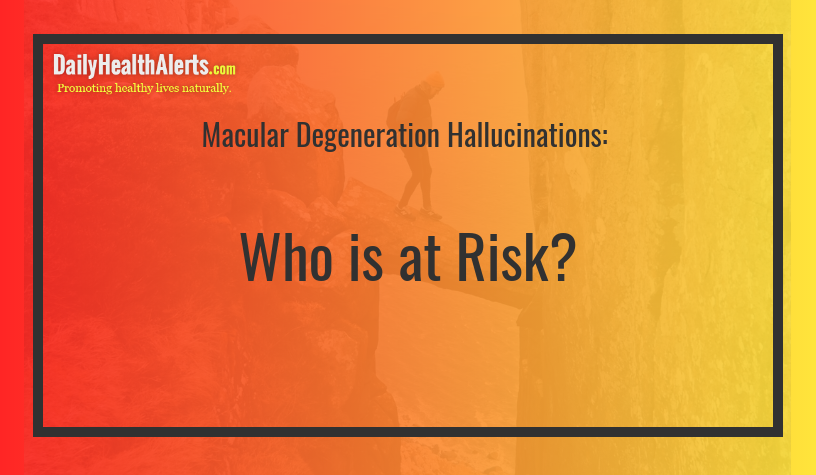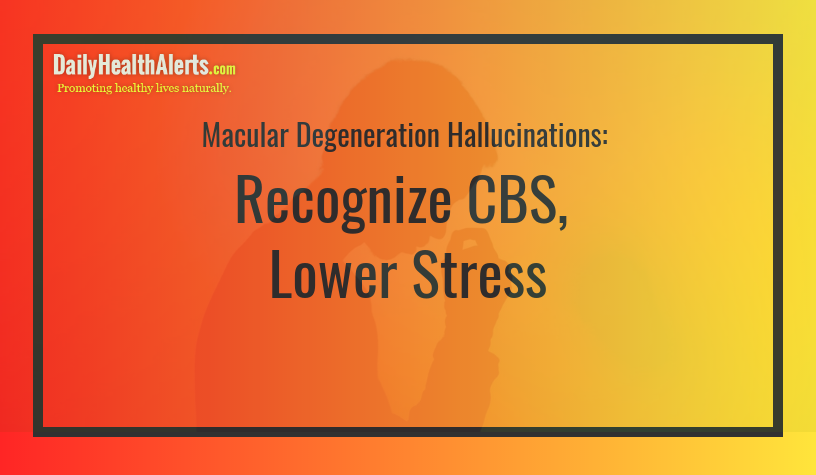When your vision is affected by macular degeneration, symptoms may first show up as some odd and even frightening hallucinations. The misdiagnosis of these hallucination can range from cognitive decline to past recreational drugs, like LSD remnants, coming back to affect the brain. When you or someone you know displays these symptoms, it is essential to have included in a medical evaluation the possibility of being associated with visual compromise such as macular degeneration, in which case you should take vitamins for macular degeneration.
New studies of macular degeneration are showing the importance of recognizing hallucinatory episodes and how essential it is to educate those afflicted so they do not feel they are experiencing something authentic or, worse yet, as if they are losing their mind.
Charles Bonnet Syndrome
In 1762 a Swiss chemist named Charles Bonnet discovered “complex visual hallucinations” that his 90 year old grandfather was experiencing. The grandfather, Charles Lullin, had undergone bilateral cataract surgery years before, which improved his vision, but over time he lost his sight. This is when the hallucinations started, yet he was in good physical and psychological health (a rarity at such an advanced age). The images he reported seeing included realistic women and men, animals, architectural structures, horse and carriages, as well as flowing tapestries all varying in colors, shapes and locations.
Bonnet studied and wrote about his grandfather’s hallucinations particularly theorizing the comparison to his visual challenges. A few years later Bonnet himself developed rare, painful vision loss eventually succumbing to blindness by age 40 which also included hallucinations similar to his grandfather. Fast forward 205 years when, in 1967, Swiss scientist, George De Morsier picked up Bonnet’s hallucination research and coined the affliction Charles Bonnet Syndrome (CBS) aka Visual Release Hallucinations.

Who Is At Risk?
Anyone is pretty much at risk of developing CBS, particularly if macular degeneration or other visual challenges are present. However, the estimated percentage of those who may experience minor to major hallucinations can be upwards of 30%, as reported by the journal Optometry almost a decade ago.
Recently, UpToDate reports on a combination of studies that cited the epidemiology of CBS, stating,
“The Charles Bonnet syndrome (CBS) may be more common than is generally appreciated. Visual hallucinations are often unreported by patients because they fear that they represent psychiatric disease. When this symptom is specifically solicited in older patients with impaired vision, 11 to 15 percent admit to having visual hallucinations. The reported prevalence was even higher, 39 percent, in one survey of patients diagnosed with macular disease. These surveys also reveal that most patients had failed to report these symptoms to their physician or to family members. One study found that only 12 percent of patients attending a retinal clinic were aware of the condition.”
Most people that experience CBS are elderly with visual challenges particularly linked to age-related macular degeneration (AMD). However, younger patients, even children, are published as experiencing hallucinations related to vision compromise as well.
You’re Not Crazy
Many people experiencing CBS often report that they know the hallucinations are not real. However, the fear of developing dementia can be associated with CBS creating stress inducing anxiety.
Dr David Painter, a researcher at the University of Queensland and one of the first authors of, ‘Hallucinations associated with brain hyperactivity in people with macular degeneration’ published in the journal Current Biology (10/25/18), commented,
“When people get older and they start having these unusual experiences, they are often worried that something is wrong with them, such as dementia or something similar, so they tend to not report the hallucinations for fear they may be treated differently,”
With a team of researchers, Dr. Painter’s work alongside team leader Professor Jason Mattingley developed a technique to pinpoint those experiencing hallucinations by watching their brain light up.
Painter continues,
“We used electroencephalography (EEG) to measure brain electrical activity in three groups: a group with macular degeneration and Charles Bonnet hallucinations, a group with macular degeneration and no hallucinations, and a control group of visually-healthy elderly people,… Doctors sometimes don’t recognize the disease either, and therefore can give people inappropriate medication; but our method potentially allows us to detect people who might have Charles Bonnet Syndrome by looking at their brain excitability in response to flickering stimuli.”
The researchers created a test that included viewing letters that would randomly appear on a screen in the periphery of the viewer (this is the first area to lose sight by those with macular degeneration). At the same time, a flash of random checkerboards would appear at varying frequencies which, combined, generated storms of activity in specific visual areas of the brain. By measuring this “excitability” using detailed mathematical algorithms, doctors would be able to determine CBS more efficiently.
According to Dr. Painter,
“The main finding is that when we drive activity in the visual system of people with macular degeneration who report experiencing hallucinations, there is a huge visual response compared with participants who have the same visual loss but don’t have the hallucinations.”
Once CBS can be determined, a patient will learn to embrace such hallucinations and not fear them. Furthermore, they can learn to manage hallucinations with different physical therapy techniques

Recognize CBS, Lower Stress
When you are stressed, your brain releases a whole bunch of ‘fight or flight’ hormones that can create systemic anxiety and possibly compromise your health. This especially applies to those over 60 particularly those with any level of AMD. Recognizing CBS early can help you avoid these stress triggers and the adverse effects they can cause on your body and mind.
Some CBS hallucinations and signs to look for as reported by the American Journal of Medicine (AJM) include:
The AJM concludes that,
“Because CBS frequently goes unrecognized in clinical practice, it is important for the primary care practitioners to recognize the potential for hallucinations in these patients and that further work-up may not be necessary when these patients have full insight into the unreality of these hallucinations. Recognition of this syndrome could save limited health care dollars, relieve patient anxiety, and save time wasted on unnecessary testing and evaluation.”
It is essential to recognize or find out if hallucinations are present as this may determine a possible, rapid acceleration of macular degeneration. More importantly, it could rule out a path of powerful anti-psychotic medications and other psychosis treatment. Remember that, if there is no mental compromise, Charles Bonnet Syndrome is just that, a syndrome. There is no risk of mental disease so these CBS hallucinations should be dealt with cerebrally, not emotionally.